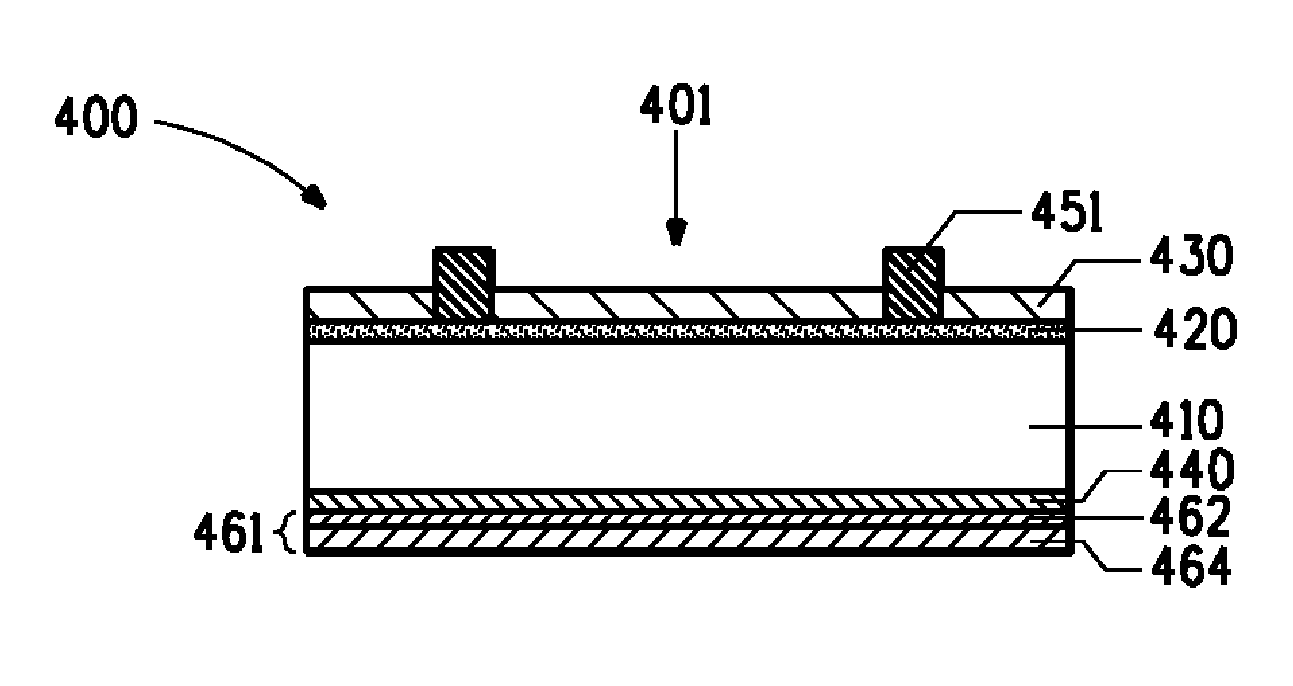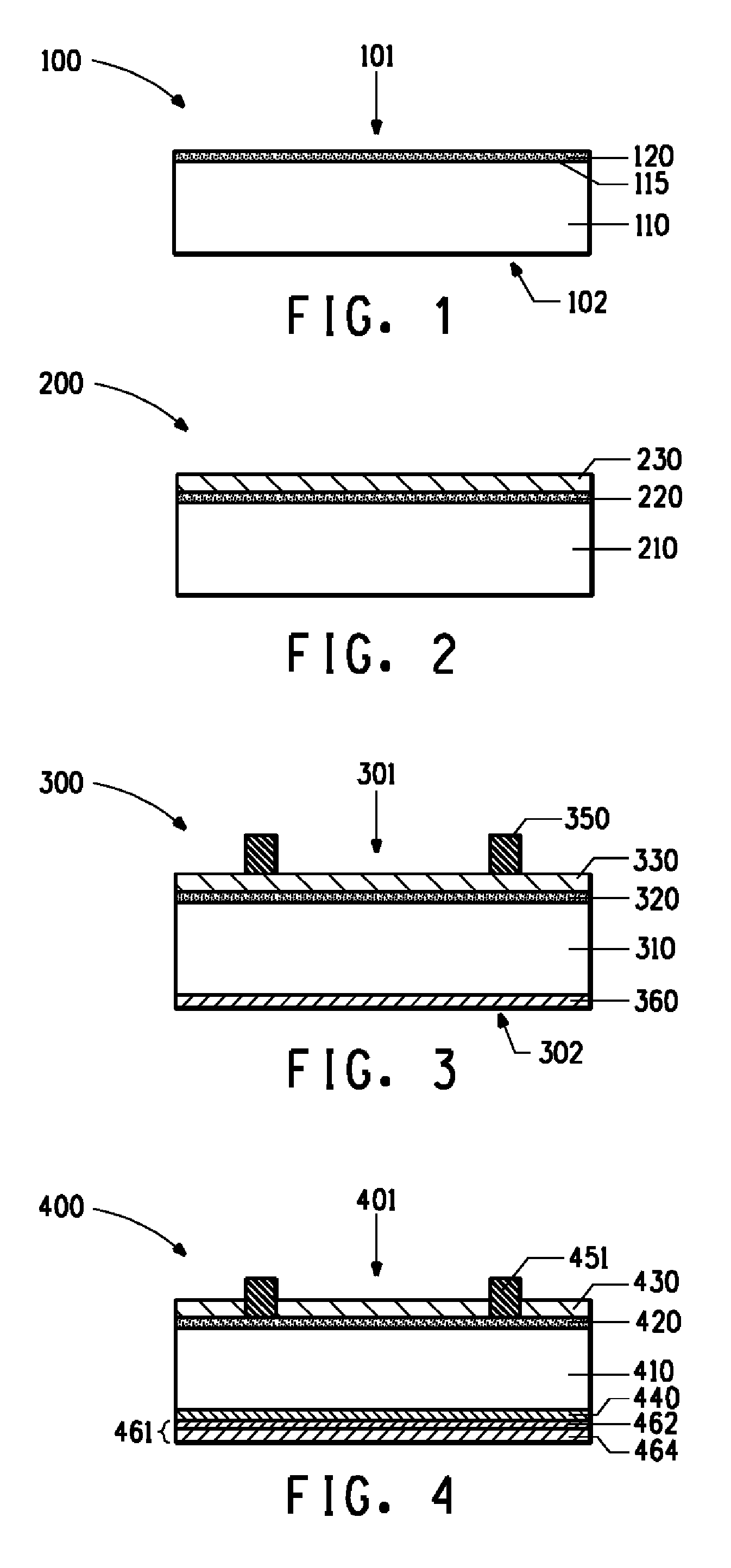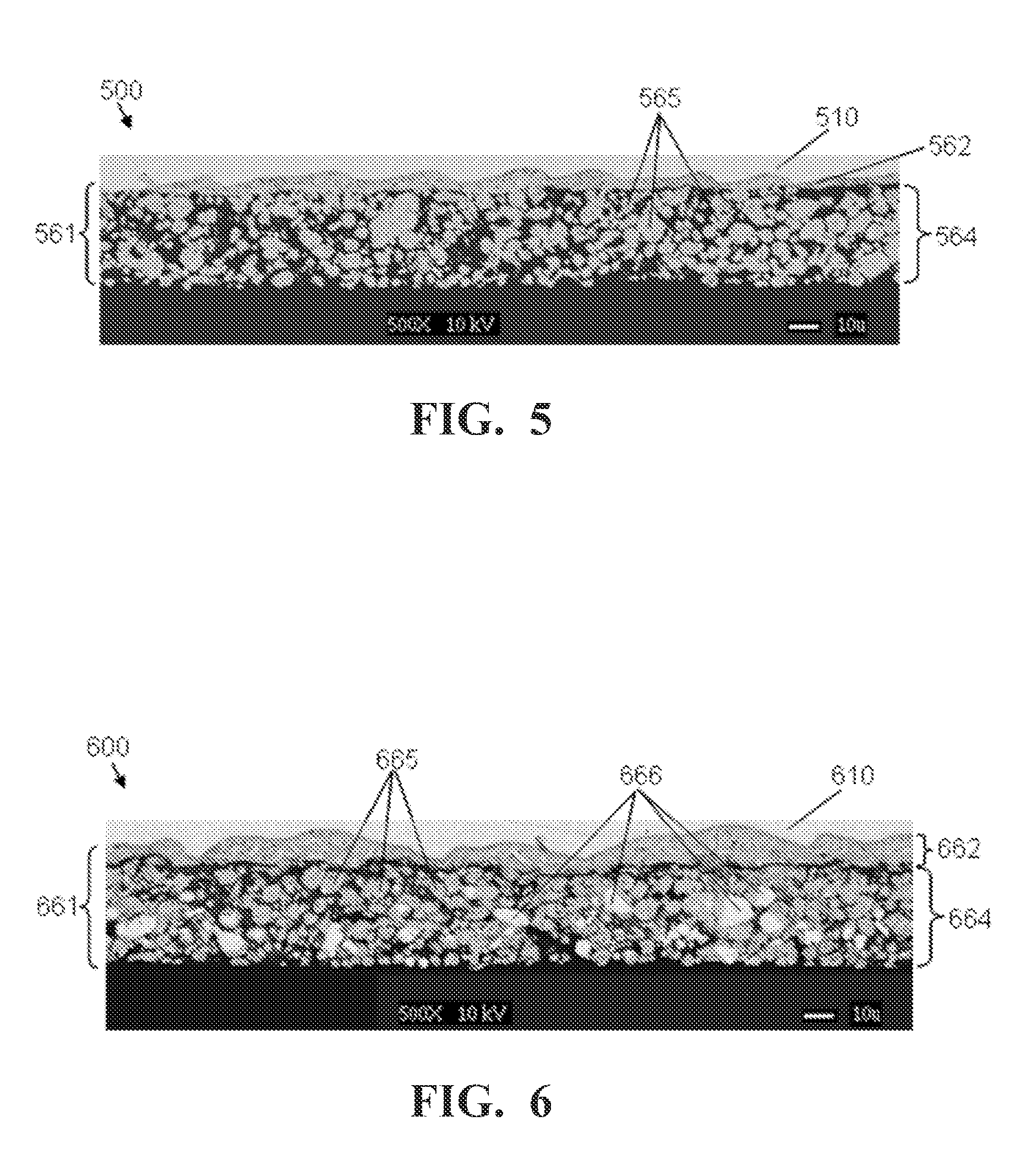Silicon-free aluminum paste composition for forming an aluminum back electrode with large silicon particles
a technology of aluminum back electrode and silicon particles, which is applied in the manufacture of final products, metal/alloy conductors, conductors, etc., can solve the problems of poor process yield, wafer bowing or cell deformation
- Summary
- Abstract
- Description
- Claims
- Application Information
AI Technical Summary
Problems solved by technology
Method used
Image
Examples
examples
Preparation of Back-Side Silicon-Free Aluminum Paste Compositions
[0107]250 g to 1000 g of master batches of aluminum pastes A, B, and C were first made and small portions were taken out from the master batches to prepare exemplary pastes comprising calcium oxide and comparative pastes comprising other additives.
Preparation of Master Batch Silicon-Free Aluminum Paste A
[0108]Two small batches of aluminum paste A with each batch of 268 g was made as follows and mixed together to get a larger batch from which the additive pastes were made.
[0109]First, a pre-wet aluminum slurry was made by mixing 80 weight % air-atomized nodular aluminum powder (greater than 99.7 weight % Al, having average particle size, d50 of 6 microns) and 20 weight % organic vehicle 1 (OV1). OV1 included 43.5% terpineol solvent, 43.5% dibutyl carbitol, 7.5% oleic acid, and 5.5% ethyl cellulose (48.0%-49.5% ethoxyl content), by weight. Then, a pre-paste mixture was formed by mixing: 247.9 g of the pre-wet aluminum sl...
PUM
| Property | Measurement | Unit |
|---|---|---|
| equivalent diameter | aaaaa | aaaaa |
| temperature | aaaaa | aaaaa |
| diameter | aaaaa | aaaaa |
Abstract
Description
Claims
Application Information
 Login to View More
Login to View More - R&D
- Intellectual Property
- Life Sciences
- Materials
- Tech Scout
- Unparalleled Data Quality
- Higher Quality Content
- 60% Fewer Hallucinations
Browse by: Latest US Patents, China's latest patents, Technical Efficacy Thesaurus, Application Domain, Technology Topic, Popular Technical Reports.
© 2025 PatSnap. All rights reserved.Legal|Privacy policy|Modern Slavery Act Transparency Statement|Sitemap|About US| Contact US: help@patsnap.com



